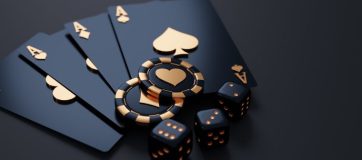Understanding the Factors that Define a Blackjack Hand as Hard or Soft
\"Hard\" and \"soft\" are terms used to describe the two potential types of hands players might receive from the initial dealing of cards in blackjack. The key differentiator is whether an Ace is present.
If your hand includes an Ace, it's referred to as a soft hand due to the flexibility it offers. An Ace can be counted as either one or eleven, providing strategic advantages.
A hard hand lacks an Ace, such as a combination like a King and an 8, or two 4s. The term \"hard\" is used because the hand values are fixed, offering limited flexibility and fewer strategic choices.
Optimal strategies in blackjack are tailored to whether you have a soft or hard hand, changing the approach you should take during play.
Blackjack Soft Hand Strategies
With a soft hand, you're safeguarded against going bust by drawing an additional card since you can adjust the Ace's value to one if needed.
Here is a simple strategy guideline for situations when you hold a soft hand:
- Soft Thirteen: For a hand of an Ace and a two, it's recommended to hit, except when the dealer presents a 5 or 6. In that case, consider doubling down.
- Soft Fourteen, Fifteen, or Sixteen: Generally, hitting is advisable. However, when the dealer's upcard is a 5, 6, or 7, the optimal move is to double down.
- Soft Eighteen: When facing a dealer showing a 3, 4, 5, or 6, double down. If their card is a 2, 7, or 8, stand. Hit when matched against a 9, 10, face card, or an Ace.
- Soft Nineteen or Twenty: Always choose to stand when you're this close to 21.
It's essential to understand that blackjack's house edge ensures that casinos usually hold a long-term advantage. Consequently, even with flawless strategy, winning every hand isn't feasible.
Blackjack Hard Hand Strategies
The strategy for managing hard hands in blackjack carries more complexity due to their inflexible nature, but leveraging robust strategy can appreciably counterbalance the house's advantage. Here are some helpful tips:
- Hand Value Between 4 and 8: Always choose to hit, regardless of the dealer's upcard.
- Hand Value of 9: Choose to double down if the dealer reveals a 3, 4, 5, or 6. In other cases, hitting is preferable.
- Hand Value of 10: If your hand's value exceeds that of the dealer's upcard, double down. Otherwise, it's best to hit.
- Hand value of 11: Double down.
- Hand Value of 12: Opt to hit unless you're against a dealer's 4, 5, or 6, in which case you should stand.
- Hand Value Between 13 and 16: Hit unless the dealer shows a card with a value of 6 or less, in which scenario you should stand.
- Hand value of 17+: Always stand.
Again, applying an effective strategy isn't a surefire recipe for victory, though it can notably enhance your chances of success! This strategy framework is particularly useful for beginning players, yet keep in mind that variations exist for house edges and optimal approaches depending on the specific game and rules applied.




